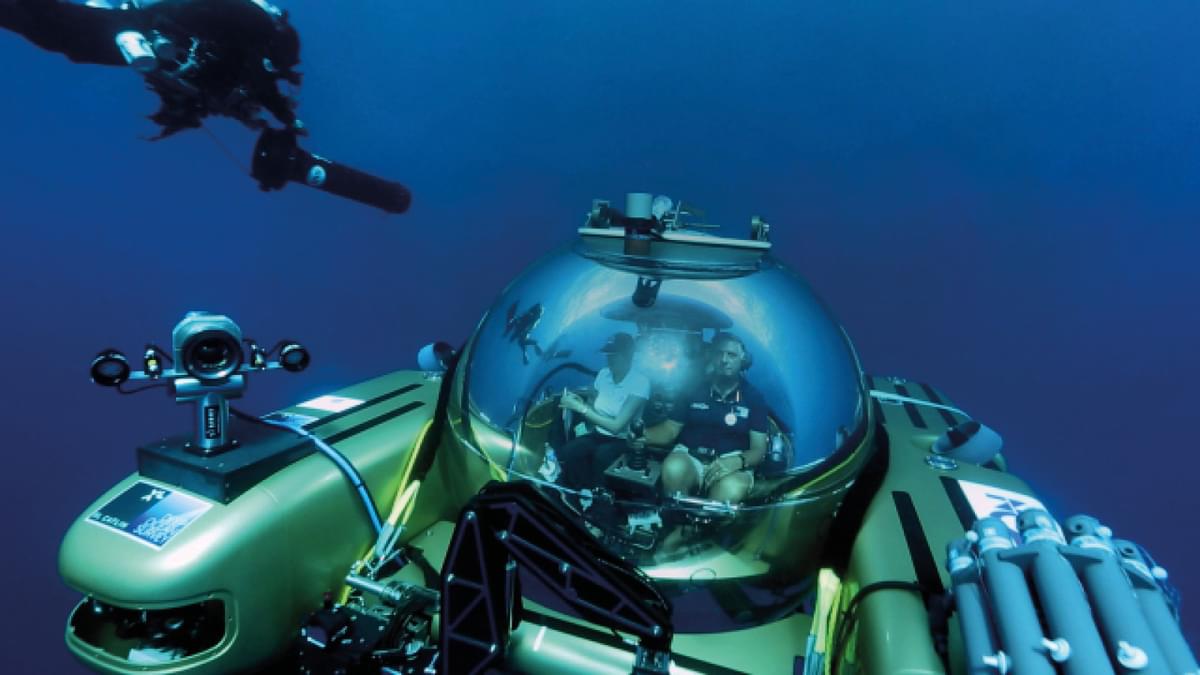
Submarine pressure
In this activity you will learn about the challenge’s submersibles face when trying to explore the deep-sea. Submariners face the effects of pressure with increasing depth, so therefore the design of the submarine is key. The submersibles being used on Nekton First Descent can reach a depth of 1,000 feet. To put this in context, recreational scuba diving has a limit of 130 feet, but the deepest point in the ocean is an astounding 36,070 feet down. Students will investigate different types of material to see which is the best for a submarine pressure hull.
Preparation
Prepare your resources, each group will need defrosted frozen or fresh peas, a large, empty plastic drink bottle with lid (at least 2L, but larger the better), polystyrene cup, clear plastic cup, opaque plastic cup, paper cup, all of similar shape and size, tray to prevent spillages, clamp, boss and clamp stand, measuring cylinder and a stiff mat (e.g. heatproof mat or stiff cardboard).
Session steps
1. Introduction (5 mins)
Jamie will open the session with a welcome and brief introduction to the expedition and any shout-outs to registered classes.
In this activity students will observe effects of a large water bottle on different material cups. This will replicate some of the challenges facing submersibles as the pressure increases the deeper, they venture.
2. Subject knowledge (10 mins)
Jamie will then explain that this activity is all about pressure. When you add more water to the bottle and place it on top of the cup you are adding more pressure, just as the submarine travels deeper it will be put under more pressure.
3. Activity time (15 mins)
Jamie will then begin demonstrating the activity and students can follow along in real-time. Arrange the equipment, shown in the diagram included in this lesson. The cup represents the hull, and the peas represent the explorers. Remove the plastic bottle and add 100 ml of water then replace the lid and place the bottle back on the cup / hull. This represents the increased depth. If the cup does not collapse, then add another 100 ml of water. Place the bottle back on the cup. Repeat until the cup collapses. Do this for all of the different types of cups. Ensure you record the ‘depth’ of water the cup could handle before it collapsed. Students should consider the implications this has for submarine design. What properties did the cups have that would be useful when designing a submarine.
At this point, you can submit your students’ questions via the live chat.
4. Q&A and conclusion (15 mins)
After completing the activity Jamie will be able to answer pre-submitted questions and take part in the live chat. At the end of the broadcast, Jamie will suggest some other activities you might like to try and what's coming up in the rest of Submarine Live 2019.
Speakers

Jamie Buchanan-Dunlop
Executive Director, Encounter Edu
Brought to you by


Submarine pressure
In this activity you will learn about the challenge’s submersibles face when trying to explore the deep-sea. Submariners face the effects of pressure with increasing depth, so therefore the design of the submarine is key. The submersibles being used on Nekton First Descent can reach a depth of 1,000 feet. To put this in context, recreational scuba diving has a limit of 130 feet, but the deepest point in the ocean is an astounding 36,070 feet down. Students will investigate different types of material to see which is the best for a submarine pressure hull.
Preparation
Prepare your resources, each group will need defrosted frozen or fresh peas, a large, empty plastic drink bottle with lid (at least 2L, but larger the better), polystyrene cup, clear plastic cup, opaque plastic cup, paper cup, all of similar shape and size, tray to prevent spillages, clamp, boss and clamp stand, measuring cylinder and a stiff mat (e.g. heatproof mat or stiff cardboard).
Session steps
1. Introduction (5 mins)
Jamie will open the session with a welcome and brief introduction to the expedition and any shout-outs to registered classes.
In this activity students will observe effects of a large water bottle on different material cups. This will replicate some of the challenges facing submersibles as the pressure increases the deeper, they venture.
2. Subject knowledge (10 mins)
Jamie will then explain that this activity is all about pressure. When you add more water to the bottle and place it on top of the cup you are adding more pressure, just as the submarine travels deeper it will be put under more pressure.
3. Activity time (15 mins)
Jamie will then begin demonstrating the activity and students can follow along in real-time. Arrange the equipment, shown in the diagram included in this lesson. The cup represents the hull, and the peas represent the explorers. Remove the plastic bottle and add 100 ml of water then replace the lid and place the bottle back on the cup / hull. This represents the increased depth. If the cup does not collapse, then add another 100 ml of water. Place the bottle back on the cup. Repeat until the cup collapses. Do this for all of the different types of cups. Ensure you record the ‘depth’ of water the cup could handle before it collapsed. Students should consider the implications this has for submarine design. What properties did the cups have that would be useful when designing a submarine.
At this point, you can submit your students’ questions via the live chat.
4. Q&A and conclusion (15 mins)
After completing the activity Jamie will be able to answer pre-submitted questions and take part in the live chat. At the end of the broadcast, Jamie will suggest some other activities you might like to try and what's coming up in the rest of Submarine Live 2019.
Speakers

Jamie Buchanan-Dunlop
Executive Director, Encounter Edu
Brought to you by



